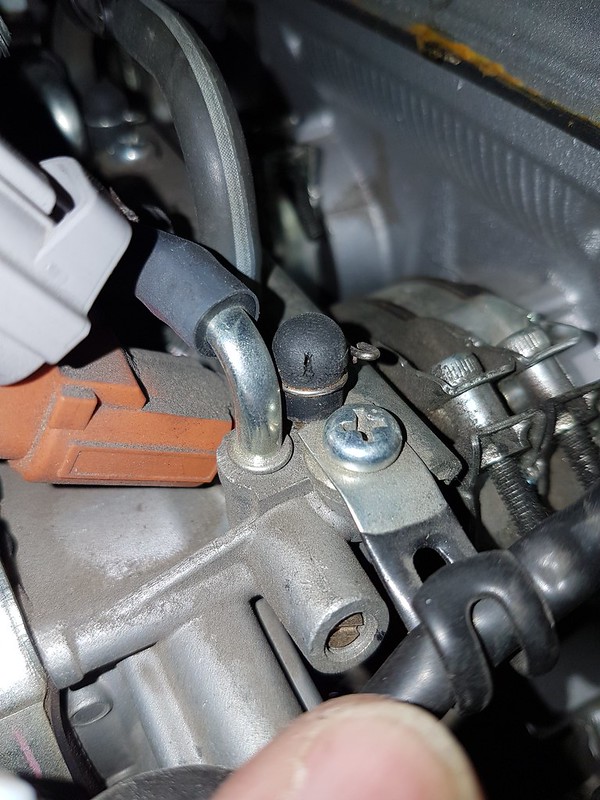"Something I didn't mention - at cold startup it idles normally (at ~1500 RPM IIRC) without the lope."
This may point you toward the answer.
The wax motor cold idle system may be introducing small air flow unbalances between the cylinders.
If one of the sliding valves on the throttle bodies is not closing all the way when normal coolant temperature is attained you would have a bit different air flow through that throttle body.
One might expect a good TBS to compensate for such an unbalance if it's persistent and unchanging.
If the unit has been sitting unused a long time the fuel may have left a sticky residue in those sliding valves. Maybe one of them is misbehaving and not closing completely as it should.
I would expect the problem to be associated with possible differences between cylinders. The oxygen sensor, TPS and many other sensors affect all cylinders equally.
You probably need to focus on where differences can occur.
This may point you toward the answer.
The wax motor cold idle system may be introducing small air flow unbalances between the cylinders.
If one of the sliding valves on the throttle bodies is not closing all the way when normal coolant temperature is attained you would have a bit different air flow through that throttle body.
One might expect a good TBS to compensate for such an unbalance if it's persistent and unchanging.
If the unit has been sitting unused a long time the fuel may have left a sticky residue in those sliding valves. Maybe one of them is misbehaving and not closing completely as it should.
I would expect the problem to be associated with possible differences between cylinders. The oxygen sensor, TPS and many other sensors affect all cylinders equally.
You probably need to focus on where differences can occur.




















































